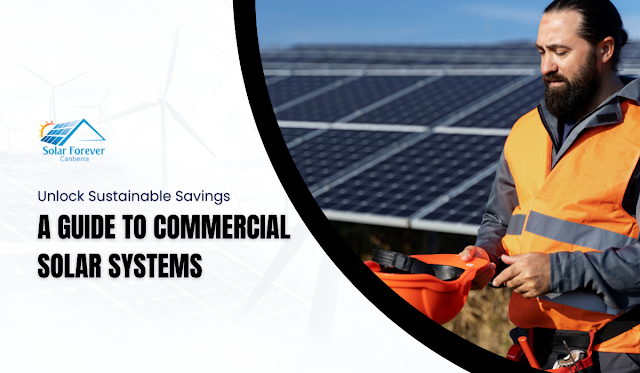Unlock Sustainable Savings: A Guide to Commercial Solar Systems
In today's business landscape, reducing costs and minimizing environmental impact are top priorities. Thankfully, commercial solar systems offer a win win solution. By harnessing the power of the sun, businesses can achieve significant financial savings while contributing to a sustainable future. This guide explores the key considerations for navigating the world of commercial solar power.
Understanding Commercial Solar Systems
Commercial Solar Systems consist of photovoltaic (PV) panels
that convert sunlight into electricity. These panels are connected to an
inverter, which transforms the direct current (DC) produced by the panels into
usable alternating current (AC) for powering your business. The system may also
include a battery storage unit to capture excess energy for use during peak
demand periods or power outages.
Assessing Financial Viability
Before diving in, it's crucial to assess the financial
viability of a solar system for your business. Below are several critical
factors worth considering:
- Energy
Consumption: Analyze your past utility bills to understand your
business's electricity usage patterns. A higher energy consumption
translates to greater potential savings with solar.
- Roof
Suitability: The size, orientation, and structural integrity of
your roof will determine the number of panels you can install.
South-facing unshaded roofs are ideal.
- Financial
Incentives: Many governments and local authorities offer
financial incentives like rebates and tax credits to encourage solar
adoption. Explore these options to offset upfront costs.
Designing an Effective System
A properly designed system maximizes energy generation and
return on investment (ROI). Here's what goes into effective system design:
- System
Size: A qualified solar installer will perform an energy audit to
determine the optimal system size that meets your energy needs while maximizing
available space.
- Panel
Selection: Different panel types offer varying efficiencies and
costs. Discuss your options with the installer to find the best fit for
your budget and goals.
- Battery
Storage (Optional): While not essential, battery storage allows
you to store excess solar energy for later use, further reducing
dependence on the grid.
Navigating Regulatory and Permitting Processes
The permitting process for installing a commercial solar
system can vary depending on your location. Consult with your local building
department and utility provider to understand the specific requirements and
obtain necessary permits before installation.
Installation and Maintenance Considerations
- Choose
a Reputable Installer: Look for a qualified installer with
experience in commercial solar projects. Ensure they are licensed,
insured, and offer warranties on workmanship and equipment.
- Maintenance: Consistent
upkeep is essential to ensure peak system performance. This may involve
cleaning the panels, checking for damage, and monitoring system
performance.
Maximizing Energy Savings
Here are some strategies to maximize your solar energy
savings:
- Implement
Energy Efficiency Measures: Combine solar with energy saving
practices like upgrading to LED lighting or using energy efficient
appliances.
- Monitor
System Performance: Track your system's energy production and
identify any potential issues that might be reducing efficiency.
- Time of Use
Billing: If your utility company offers time-of-use billing,
adjust your energy consumption patterns to utilize solar power during peak
pricing periods.
Conclusion
Investing in a Commercial Solar System is a strategic
decision that benefits both your bottom line and the environment. By
considering the factors outlined in this guide, you can unlock sustainable
savings and contribute to a brighter future for your business and the planet.
Remember, consulting with a qualified solar installer is essential to navigate
the process and ensure a successful solar journey for your business.

.png)
.png)
Comments